43 Movement Disorders
Huntingtons
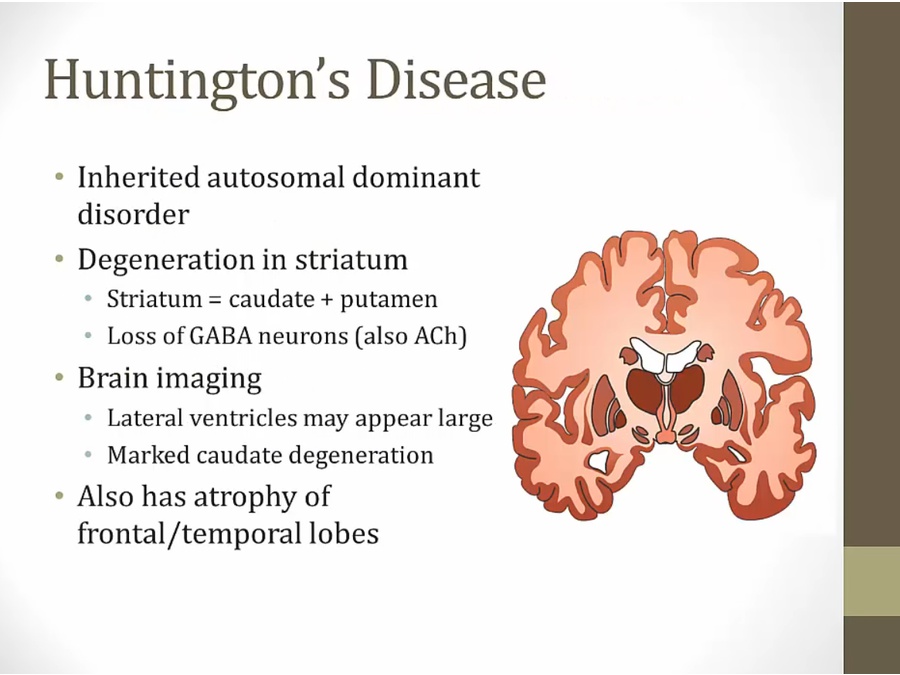
- know lateral ventricle large
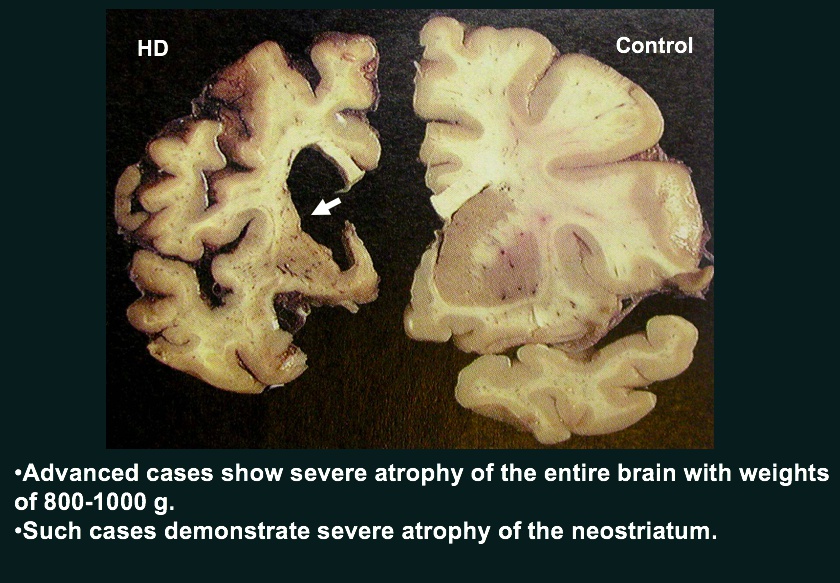
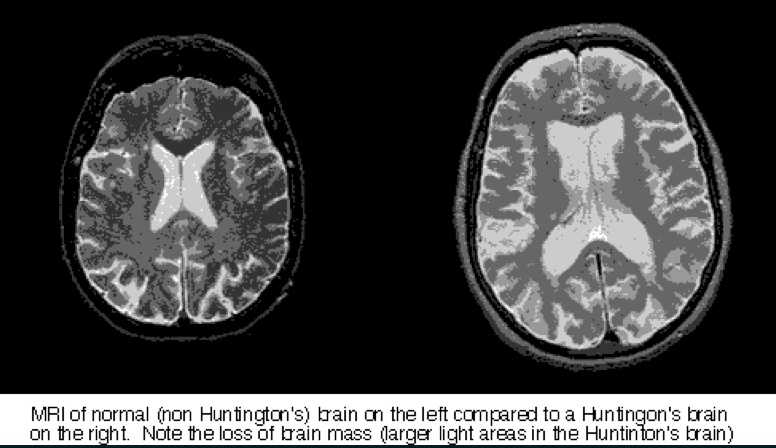
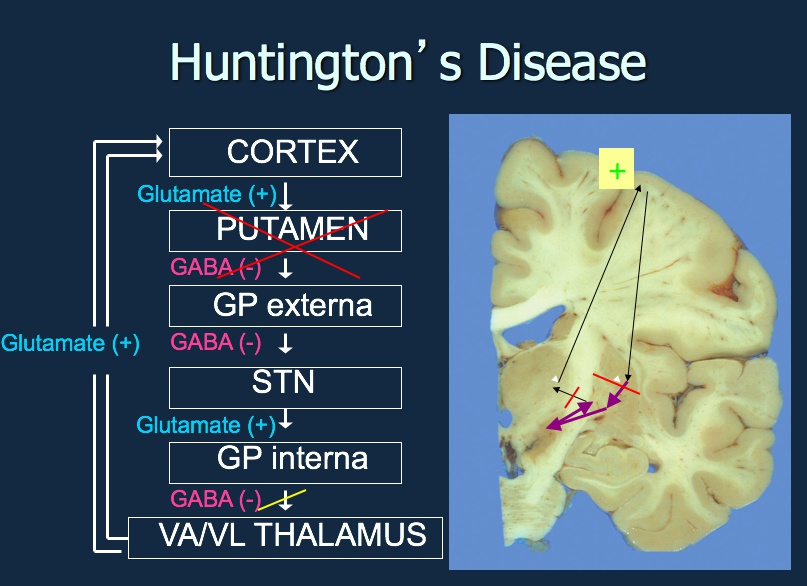

- Loss of caudate, loss of GABA, no inhibition = breakthrough of movement. Indirect pathway
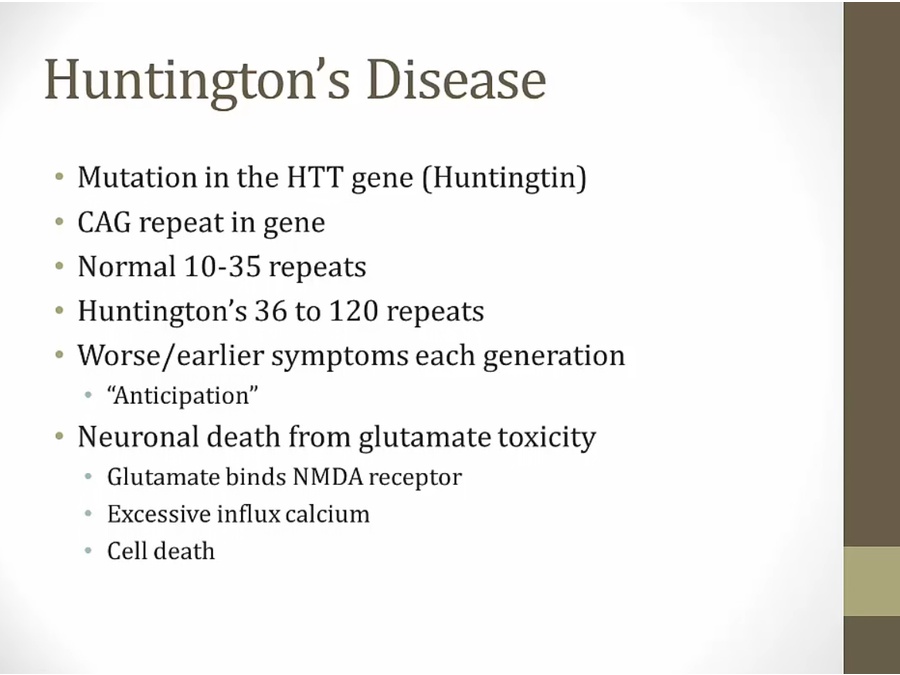
- each generation passes on more repeats to later generation = worse symptoms
- anticipation: earlier symptoms with each gen
- excitotoxicity mechanism
- NMDA binding to glutamate toxicity
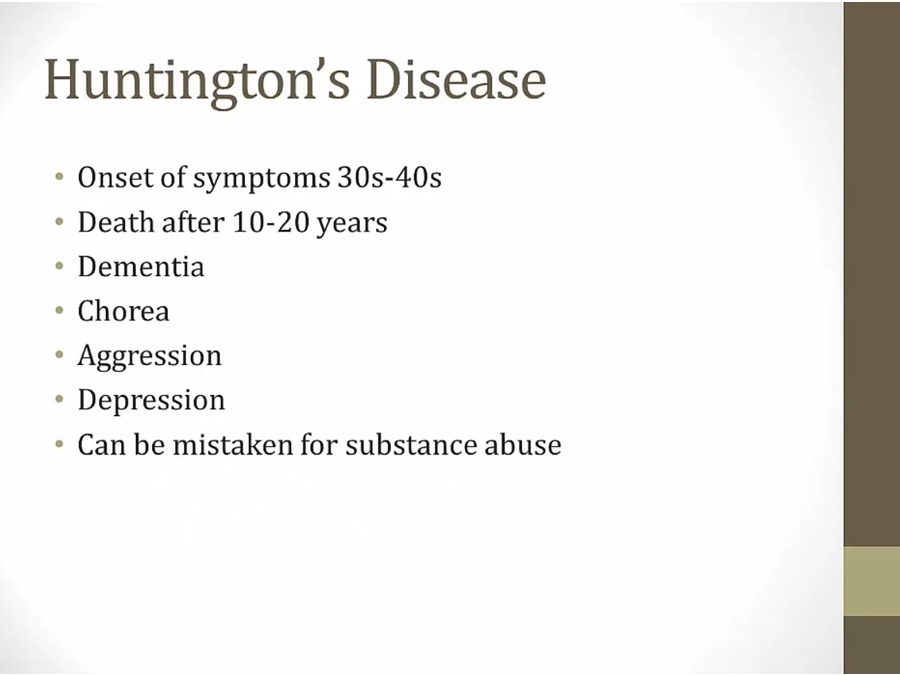
- usually adopted because most people know about it before have kids
- chorea: dance like abnormal movements
Treatment
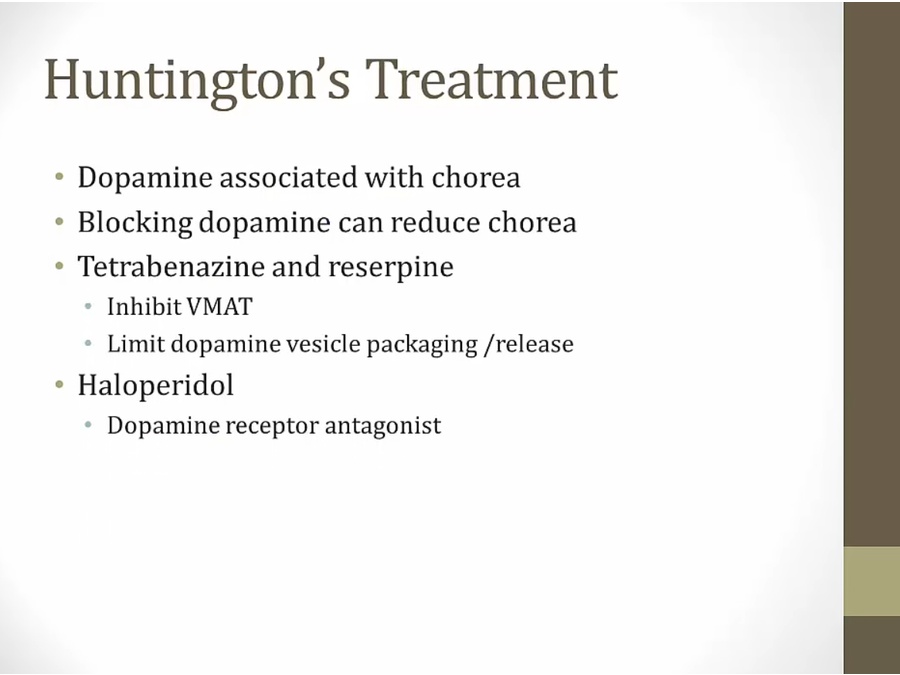
Hemiballism
- No subthalamic nucleus. No inhibitory of thalamus = movement breakthrough
- once stroke affects IC = hemiplegia
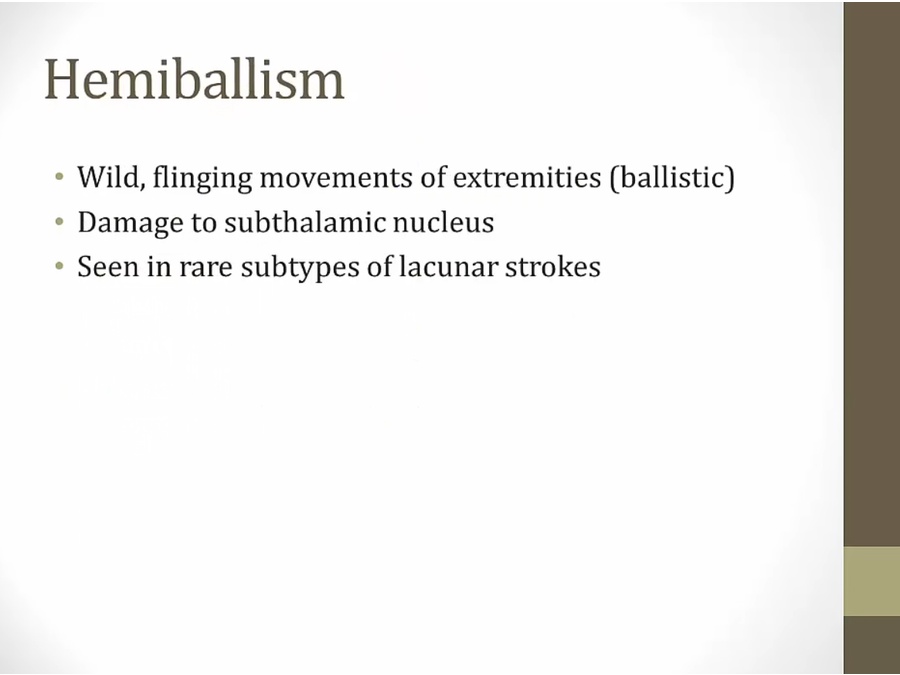
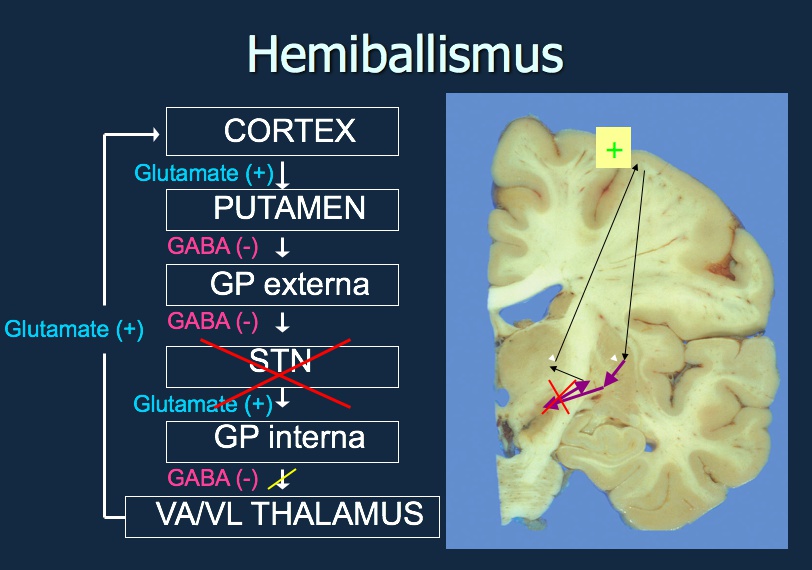

Wilson's
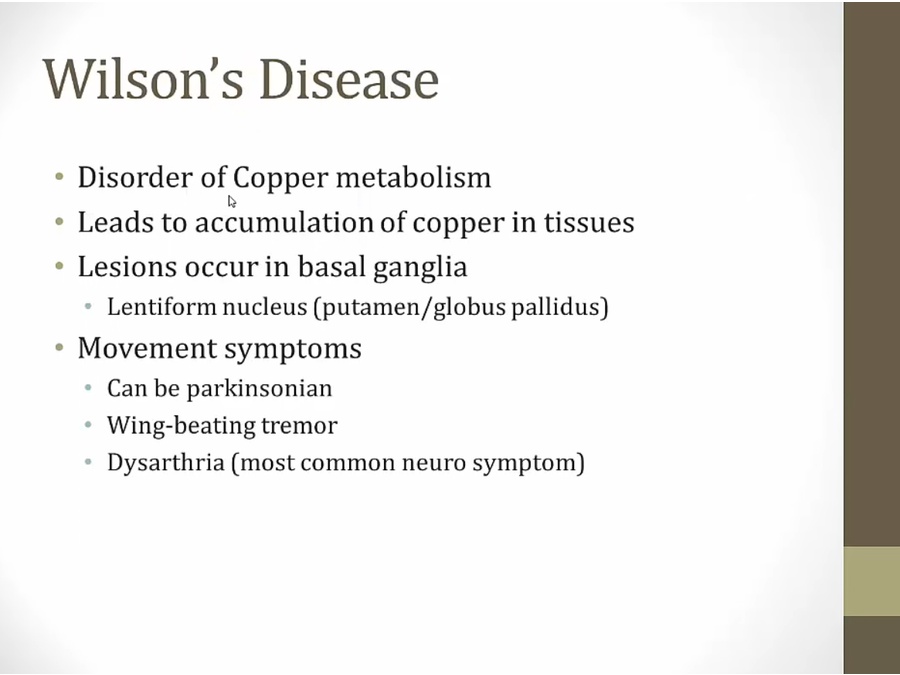
- deposit in liver (cirrhosis)
- elbows beat like wings of bird
- Mood disorders at very young age
- dysarthria: difficult to get words out, slow irregular speech
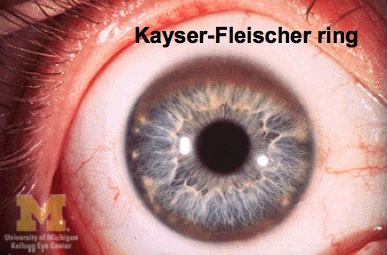
Tardive dyskinesia
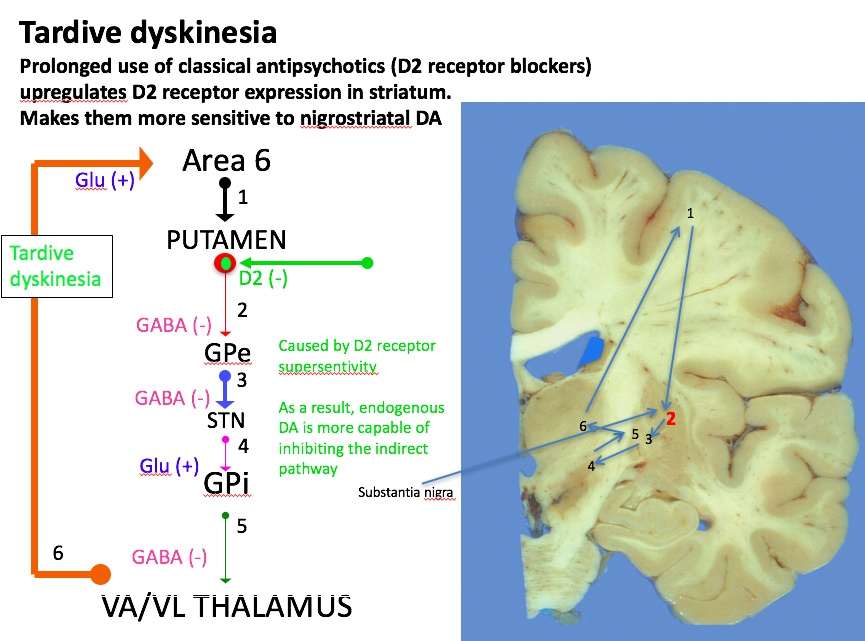

- face secondary to medications
- antipsychotic/antiemetic blocks D2, increase D2 sensitivity, hyperkinesia via D2 endogenous
- hypersensitivity of D2 receptors
L- DOPA Dyskinesia
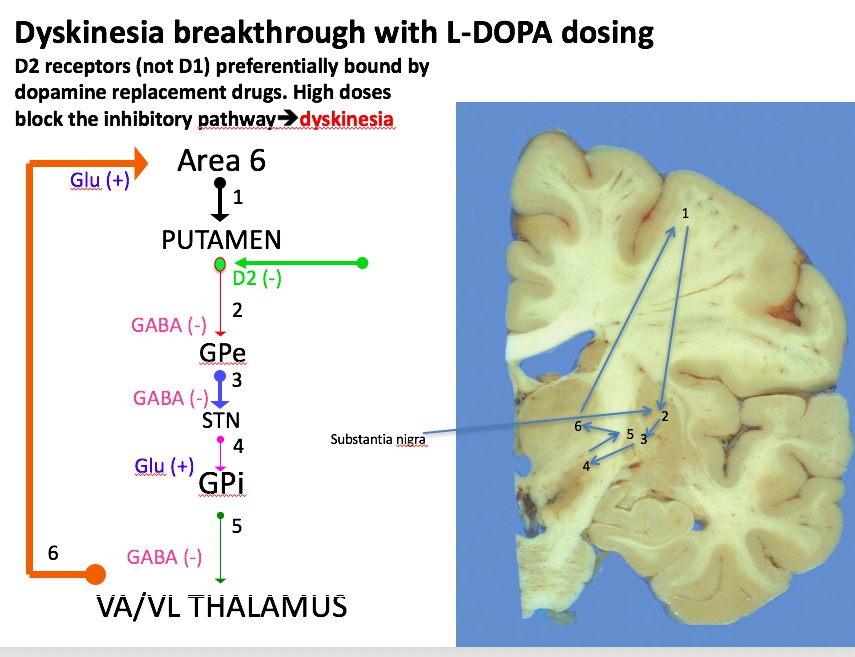
- D2 preferentially bound = blocked inhibitory pathway = dyskinesia
Hypokinetic Disorders
Parkinson

- Dopamine naturally broken down by MAO
- MAO sits on outer membrane of mitochondria
- result: Parkinson

- pt cannot initiate movement


- Loss of D1, no disinhibition, less movement


- no movement in stopping/ending
- initiation is difficult; once initiated, cannot be stopped = festination


- Loss of D1, no disinhibition, less movement

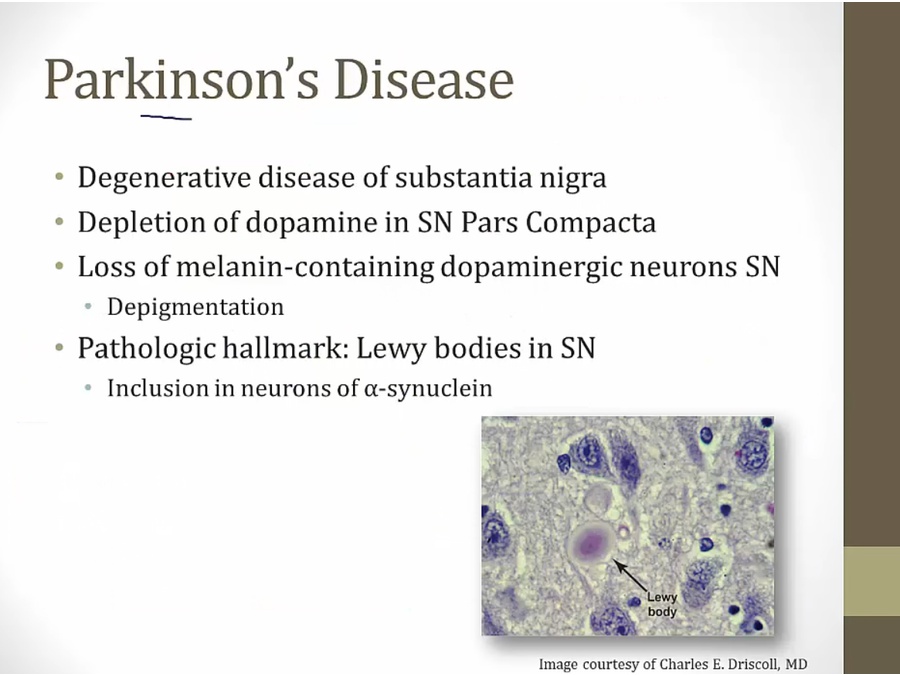
- parts of brain becomes pale because lose melanin containing dopaminergic neuron
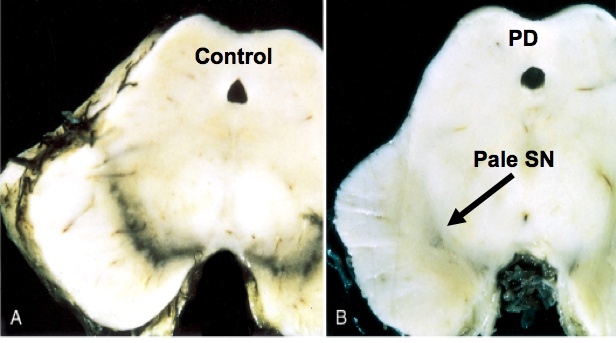
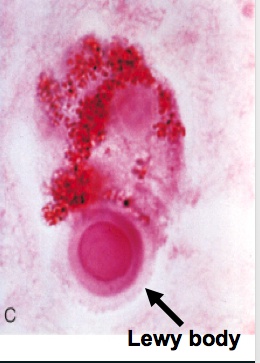
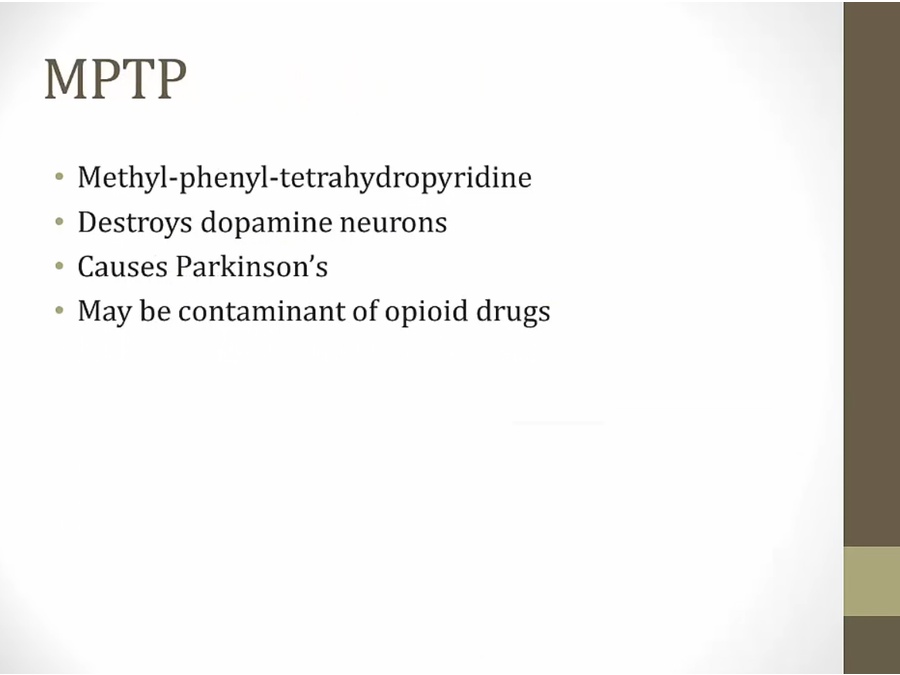
- now used to induce parkinson's in lab rats
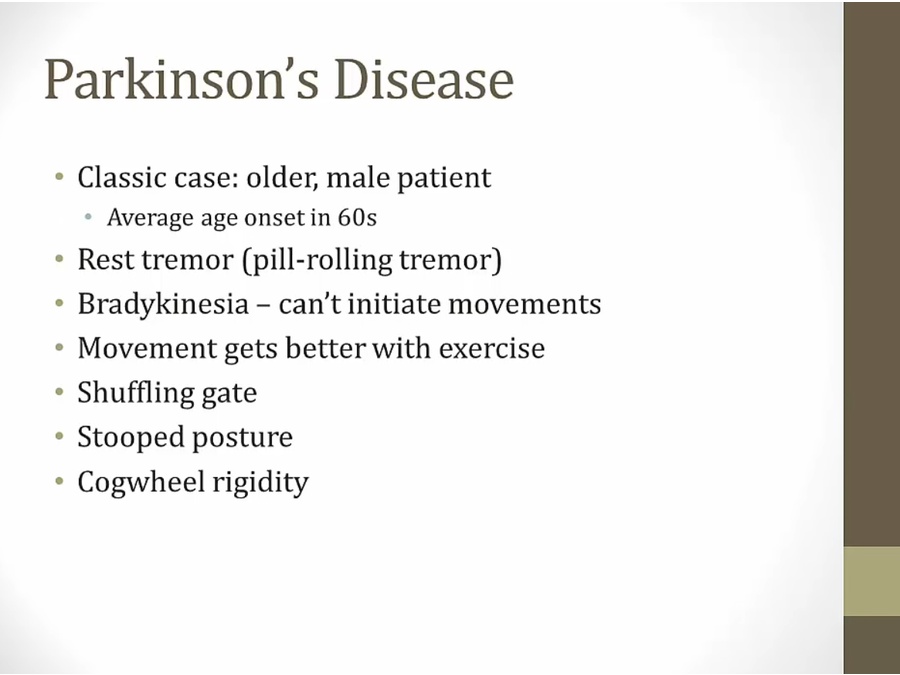
- shuffling: shuffles feet
- cogwheel: moving arms stutters as if stopping on stops of cogwheel
Tremor

Rigidity

- simultaneous activation of flexors/extensors
Treatment
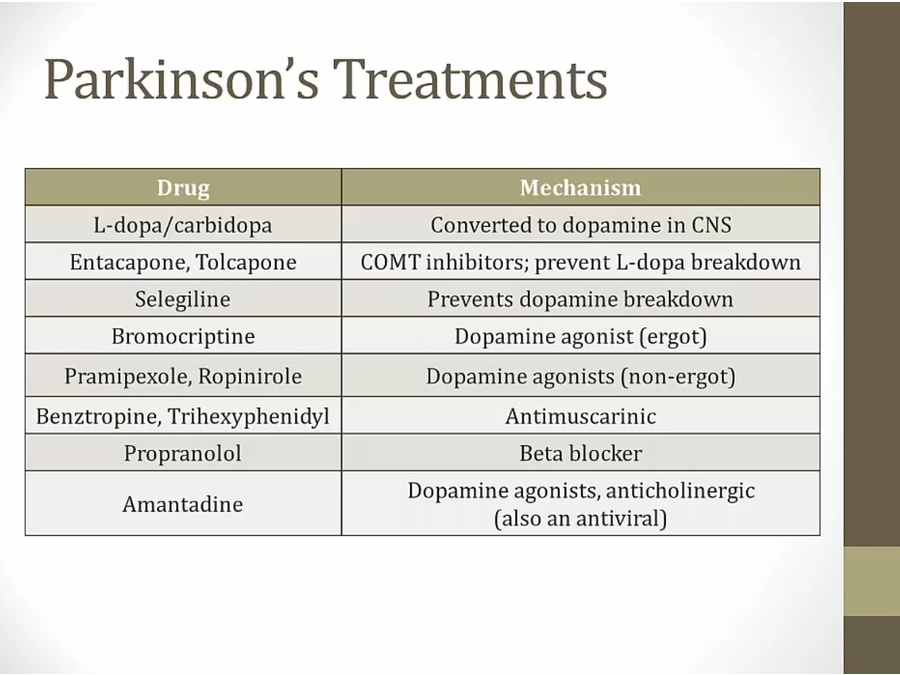
- propanolol for central tremor
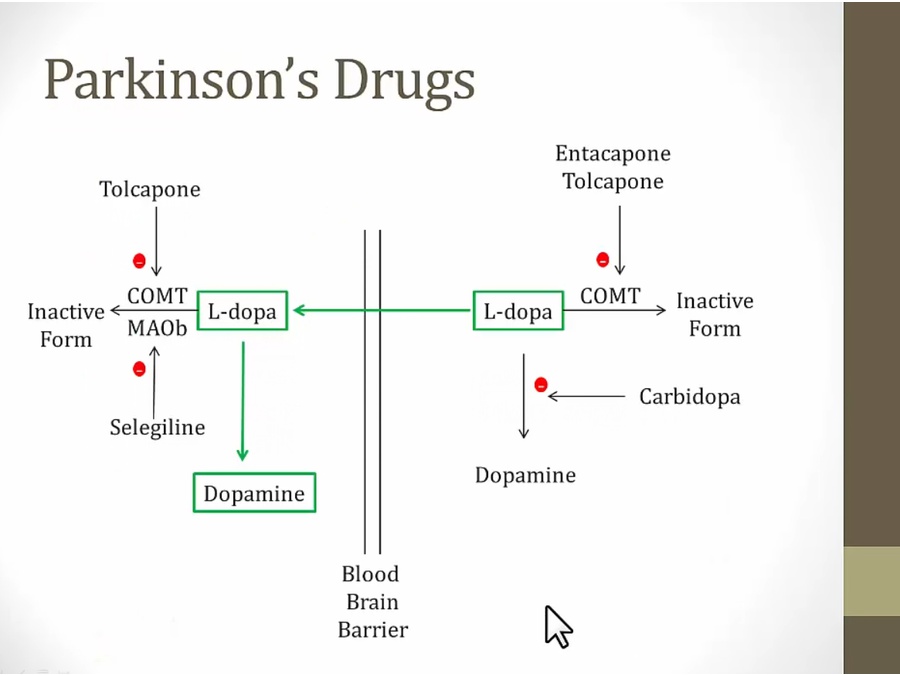

- initially usually tremor symptoms
- once develops bradykinesia/rigidity, add more drugs
- L dopa last
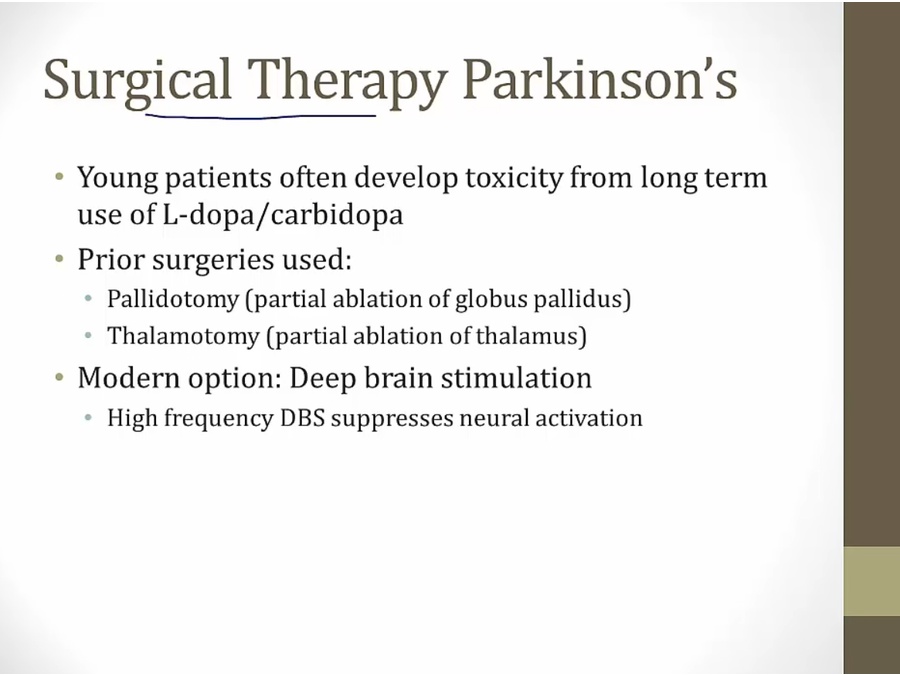
L- Dopa
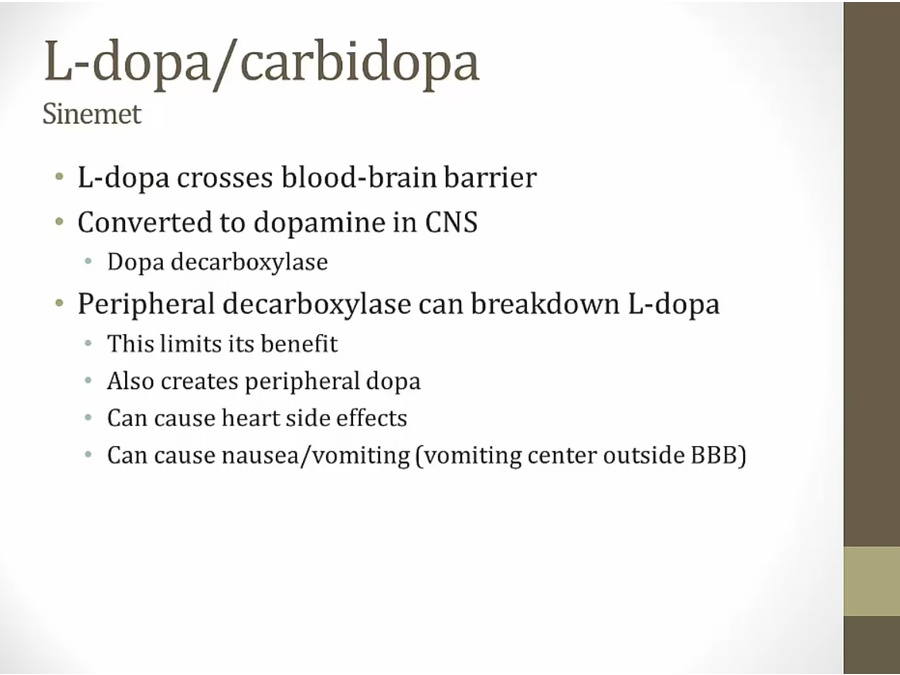
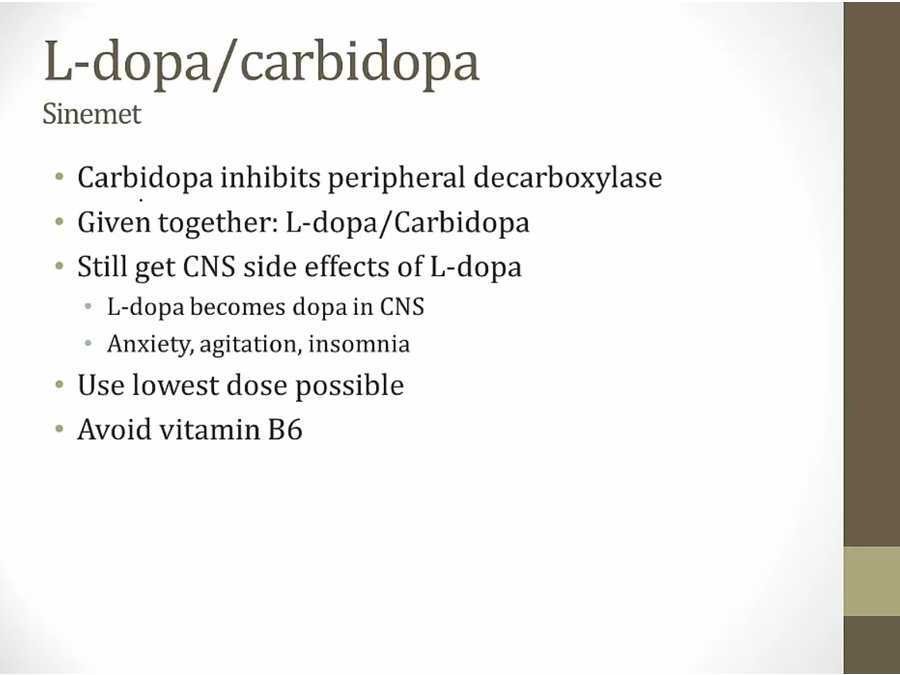
- vit B6 promotes conversion of L-dopa to dopamine in periphery
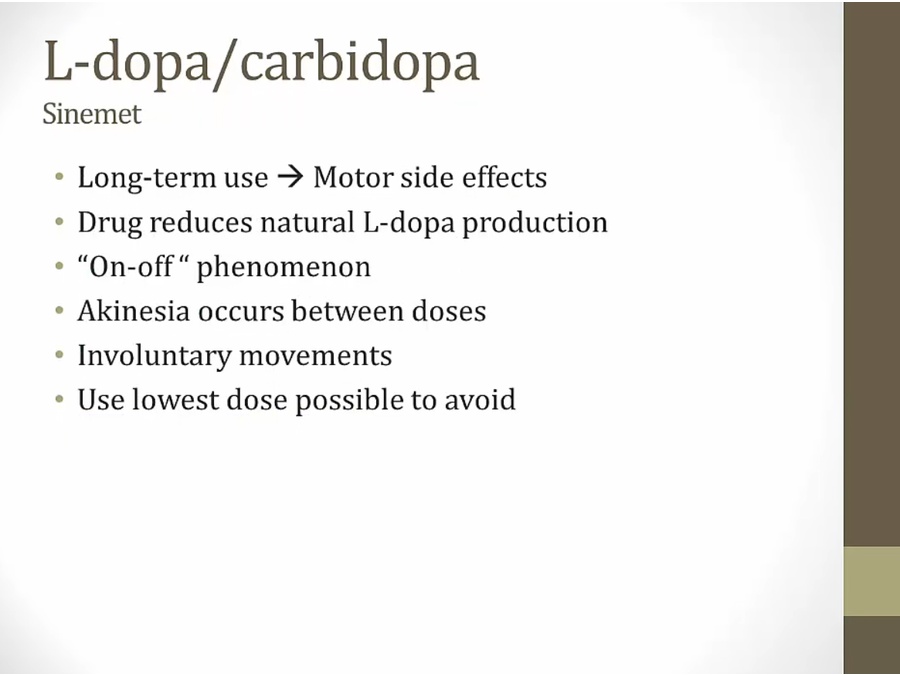
- off so severe akinesia: no movement, frozen
- dyskinesia: involuntary
Entacapone
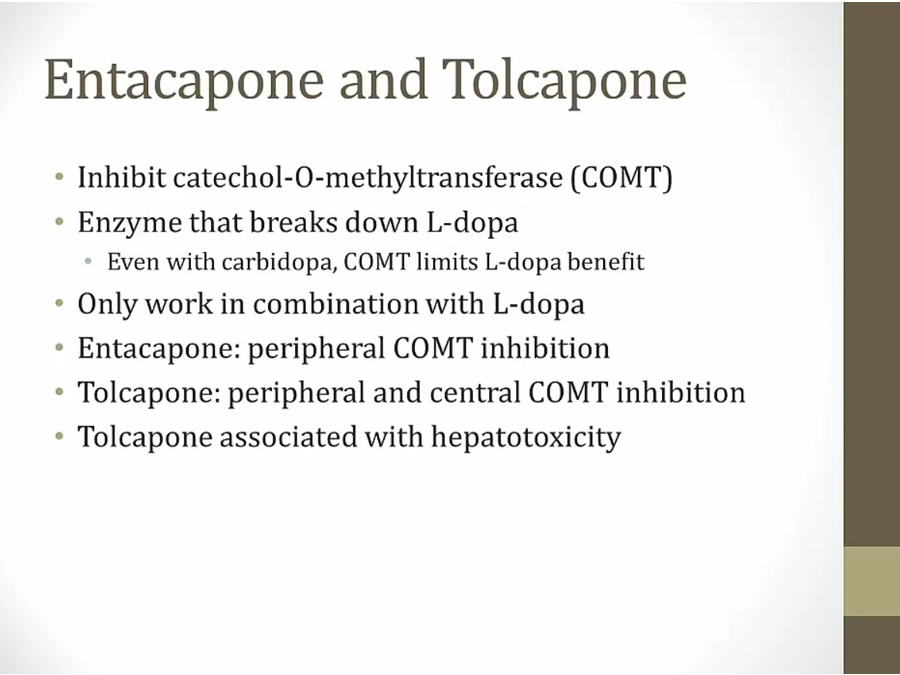
Seleginine
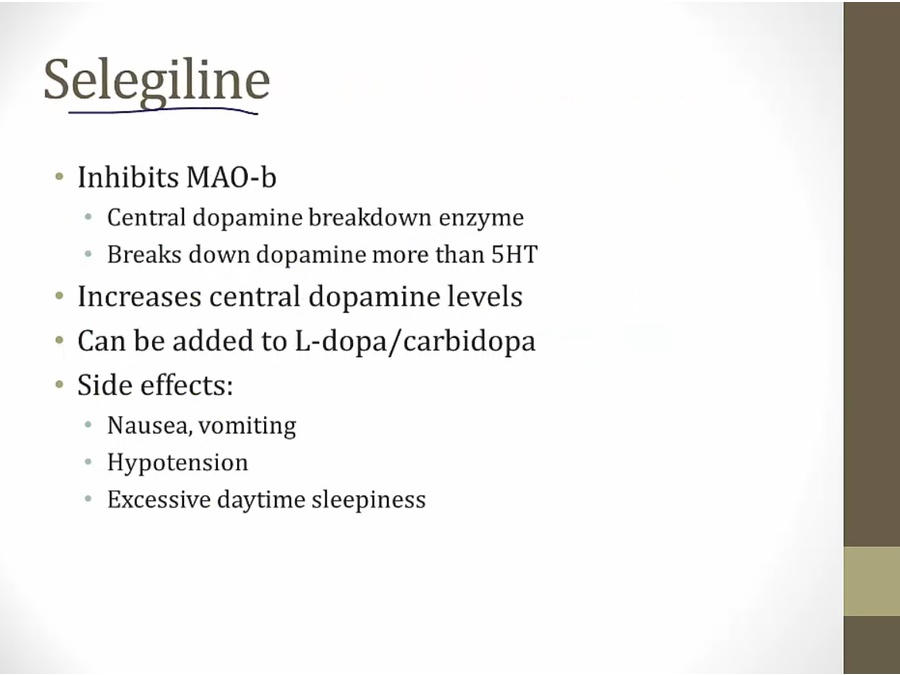
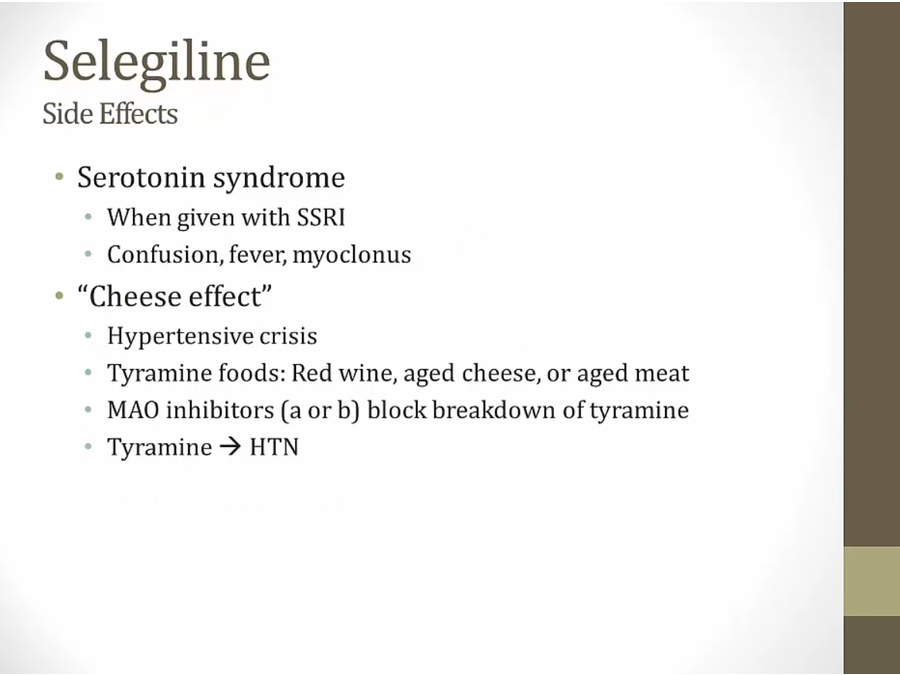
- SSRI raises serotonin; selegiline blocks breakdown = very high serotonin
Other Movement Disorders
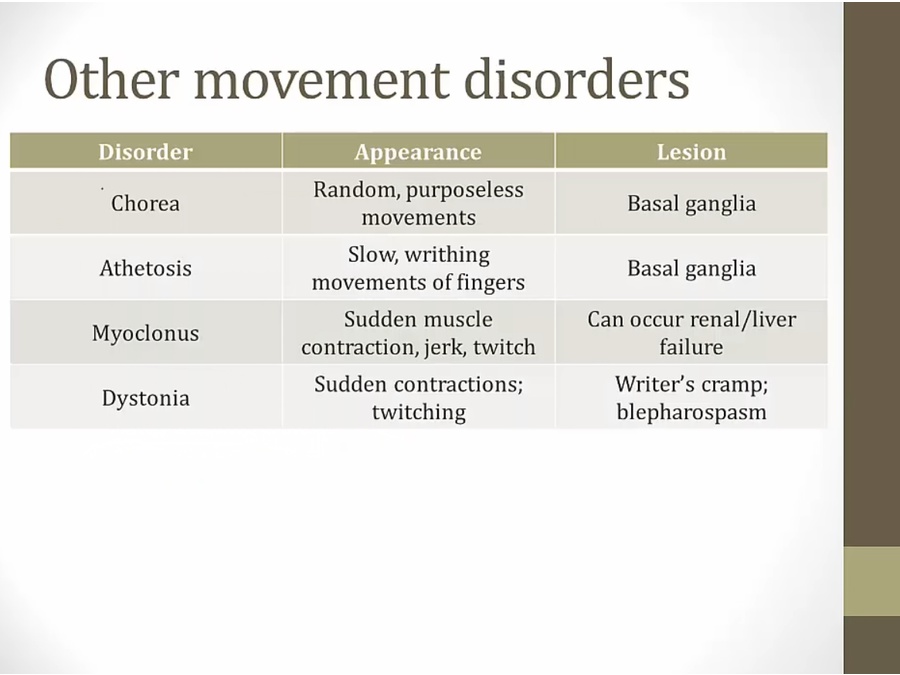
- myoclonus: sudden contraction once
- dystonia: sustained contraction
- writer's cramp: after writing for so long, arms spasm
- blepharospasm: twitching of eye muscles (blinking)
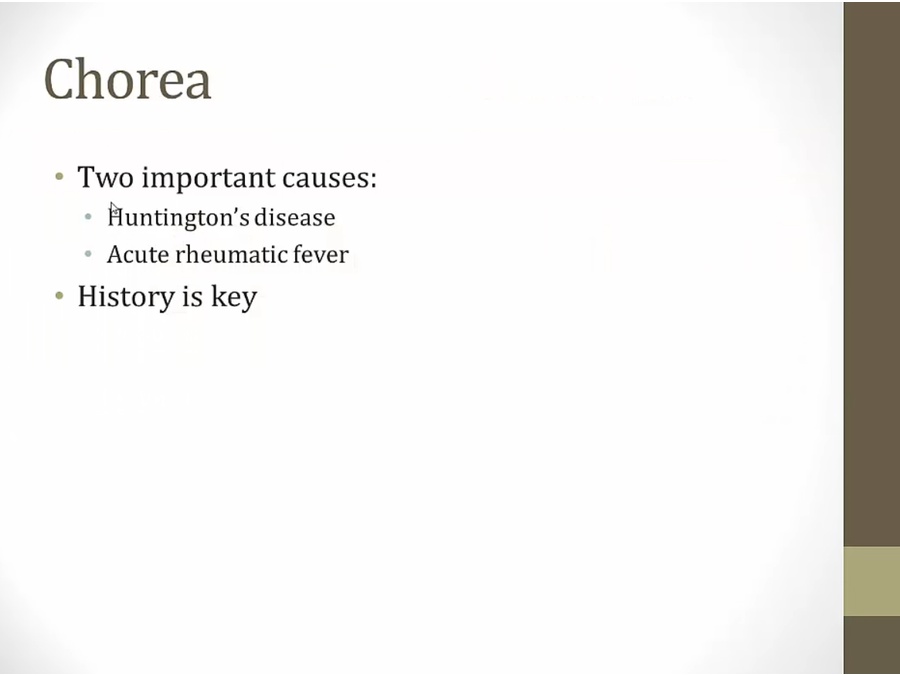
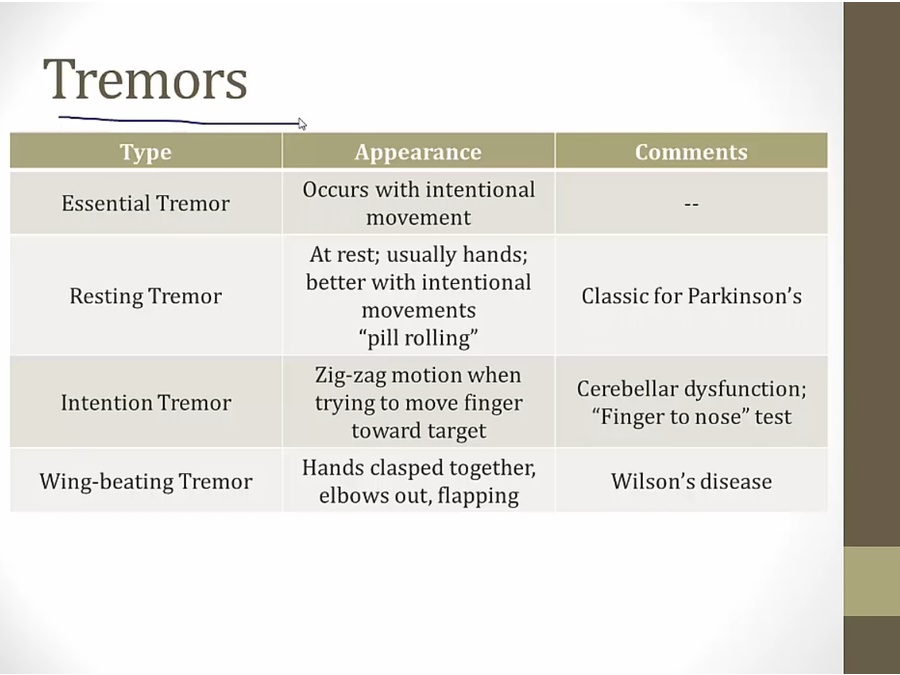
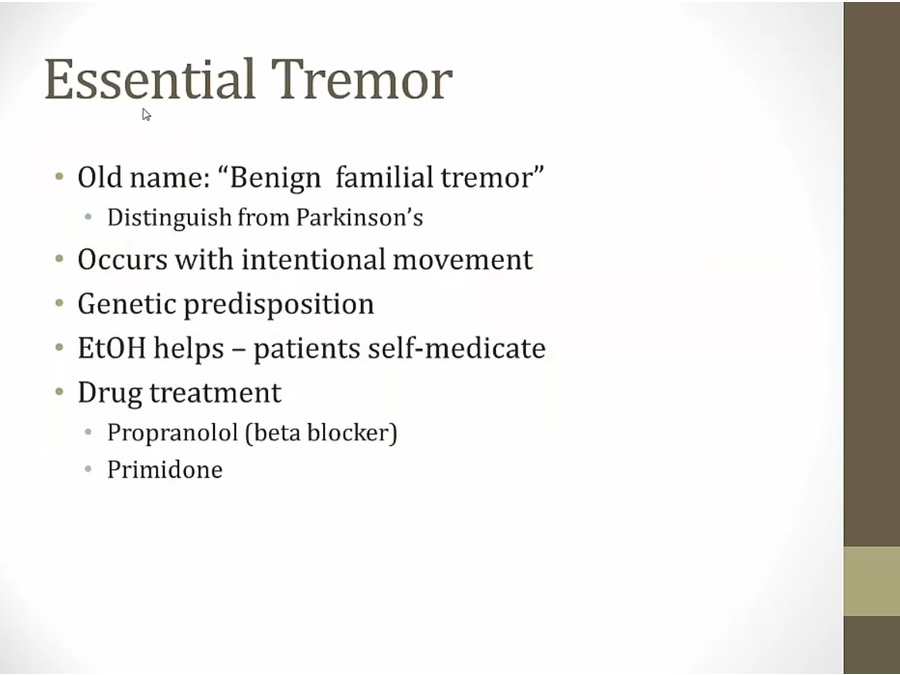
Backlinks













































